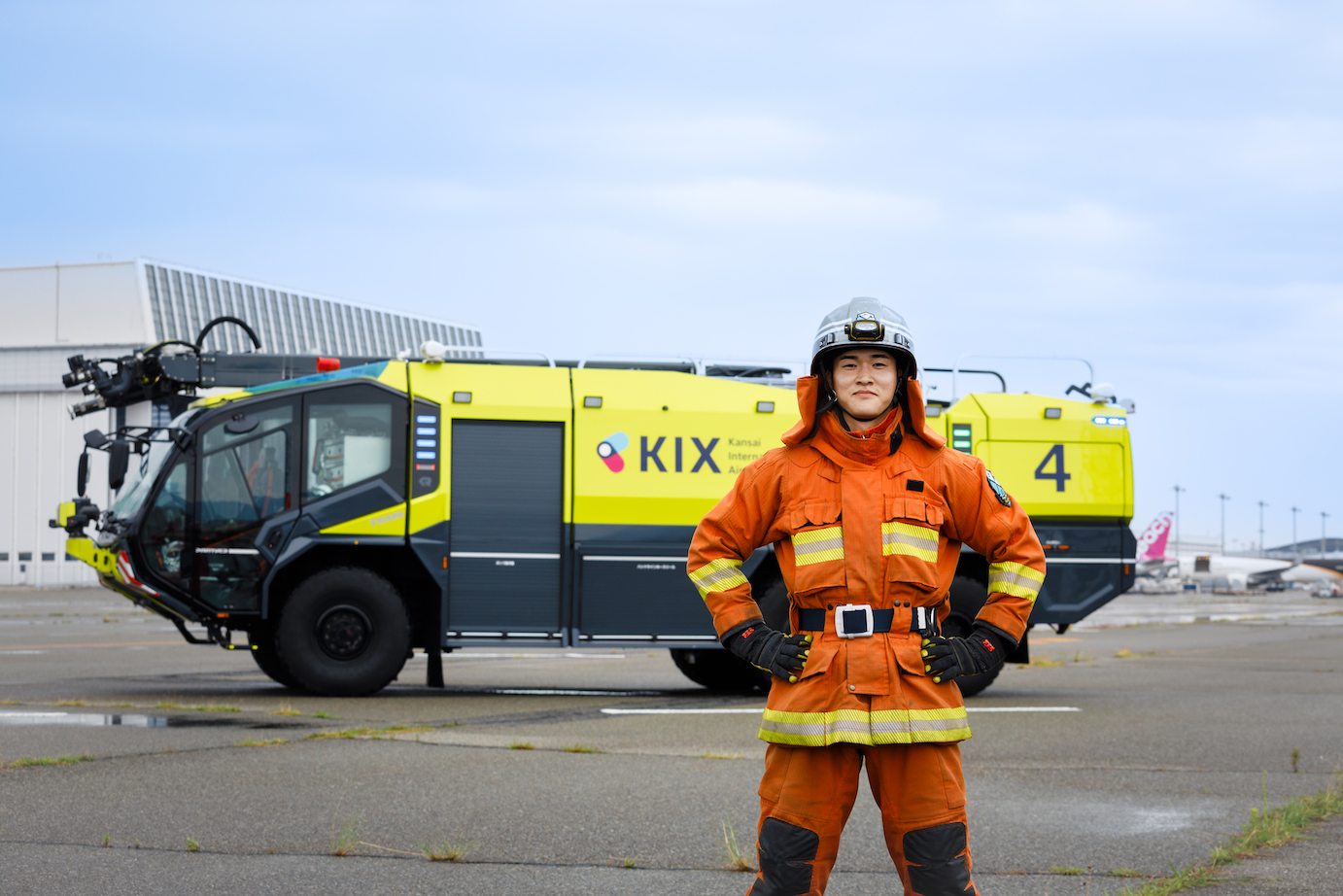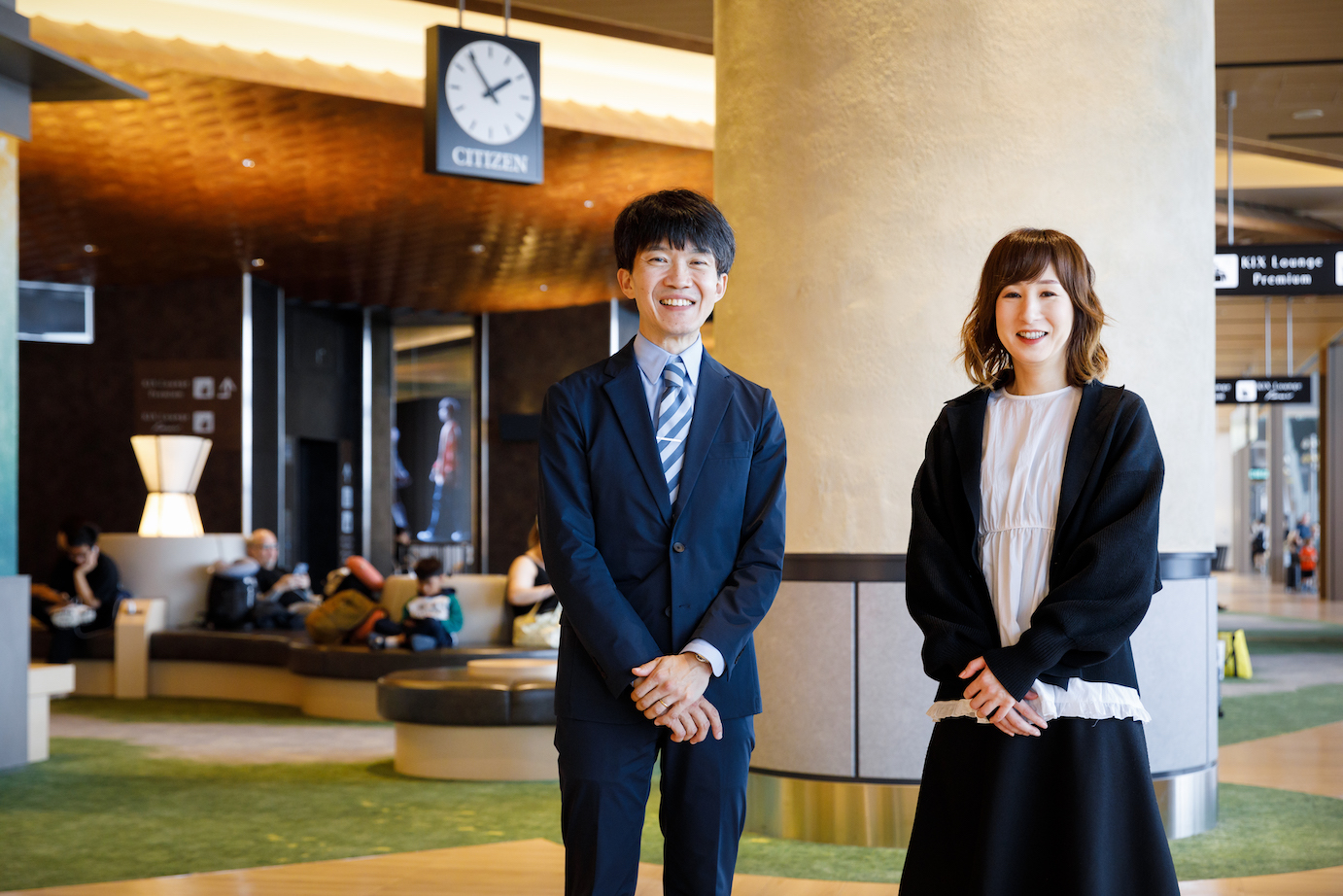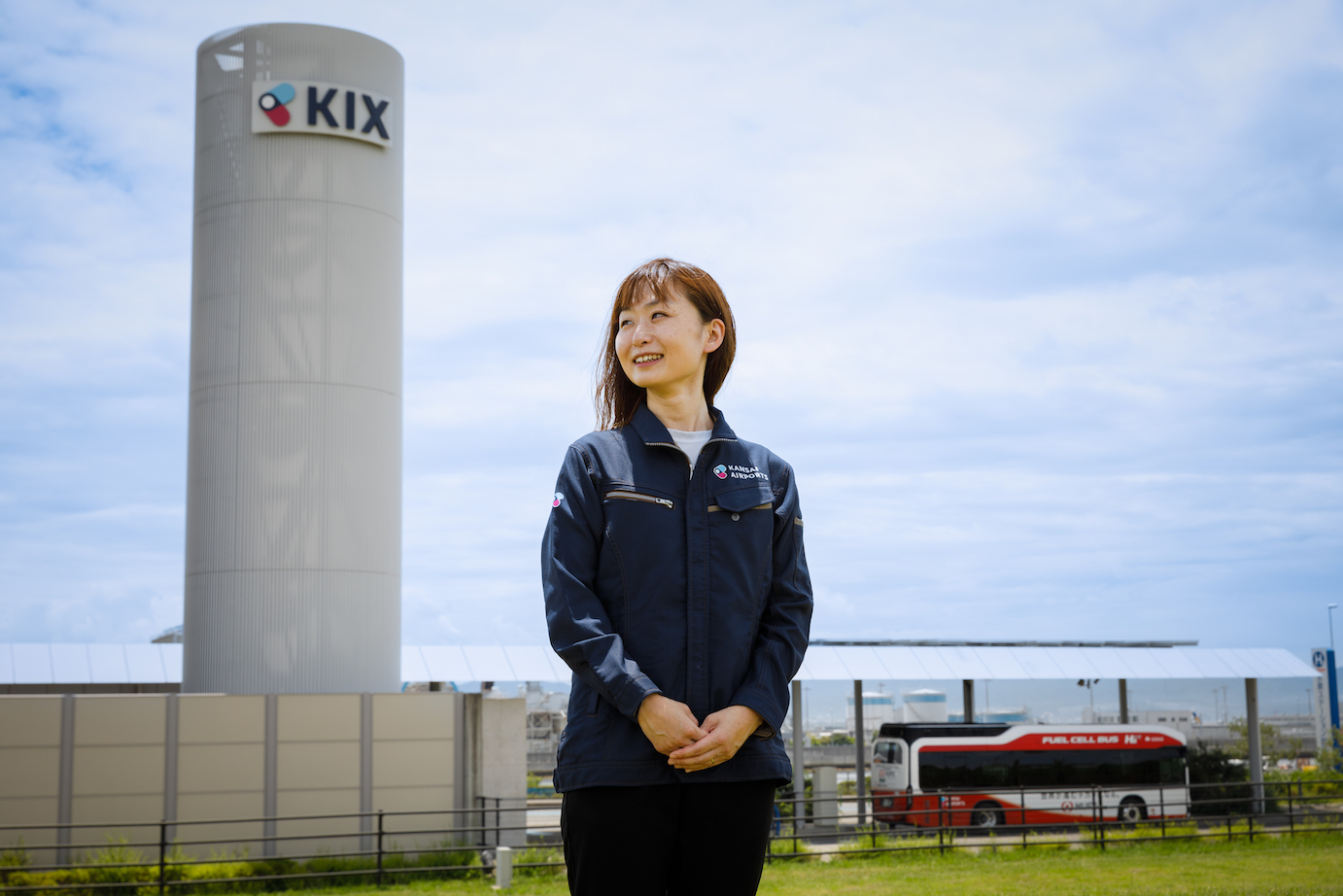
“Achieving a sustainable society.”
The Kansai Airports Group has also been seriously addressing this issue, which is considered important worldwide, for many years. We spoke with K of the Environmental Promotion Group, who tackles various environmental issues under the keywords “decarbonization, circular economy, and environmental symbiosis,” about the sustainable future envisioned by the Kansai Airports Group.
-
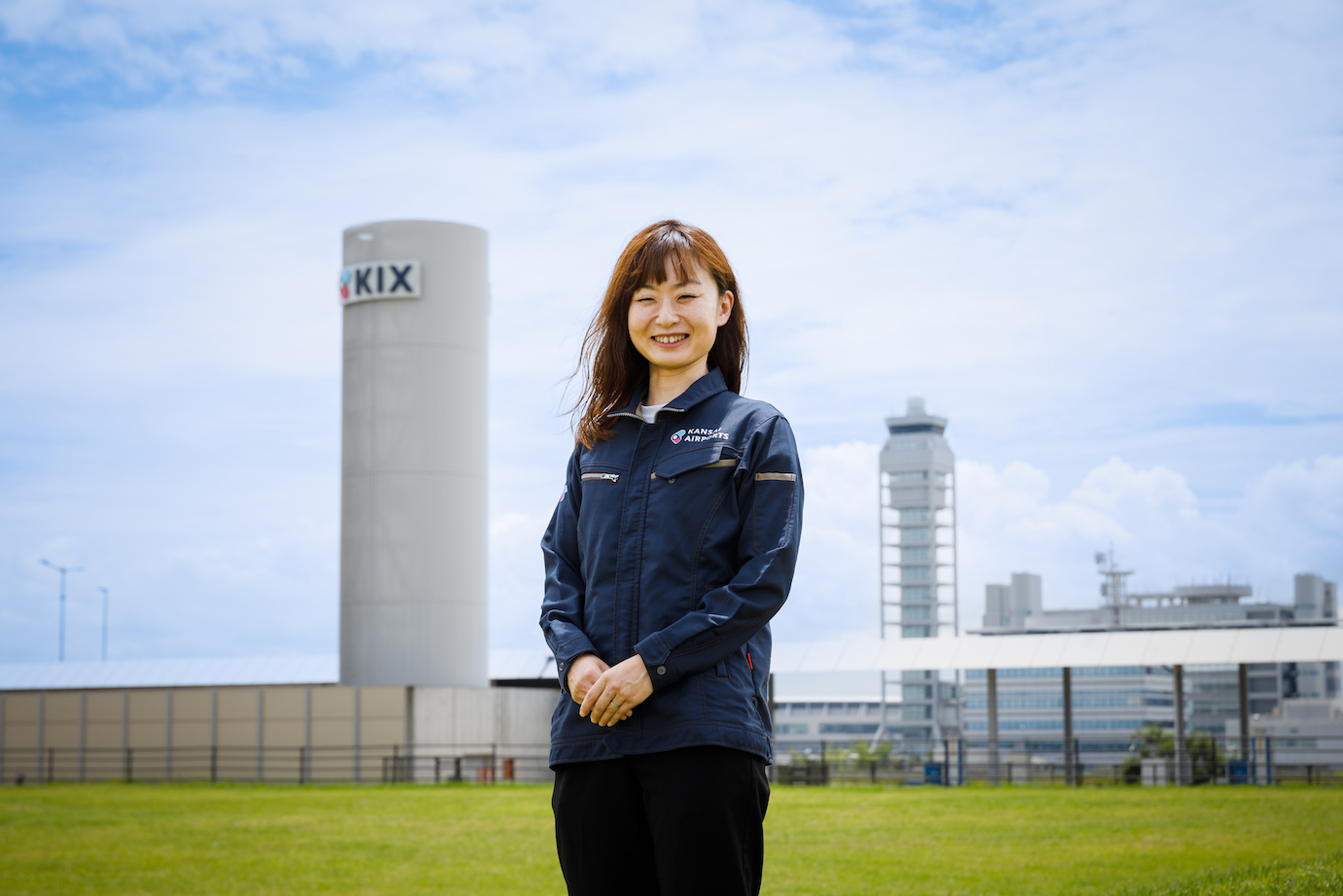
K.H.
Kansai Airports, Technical Division, Technical HQ., Environmental Promotion Group
K joined the company as a new graduate in 2009 and has since been involved in noise monitoring, maintenance of roads and bridges on the airport island, renovations projects at Osaka Itami Airport, and budget management for the Technical Department. After taking maternity and childcare leave, she has been part of the Environmental Promotion Group since 2024, where she is engaged in advancing the Group’s environmental initiatives.
Addressing global environmental issues to strengthen our role in the region
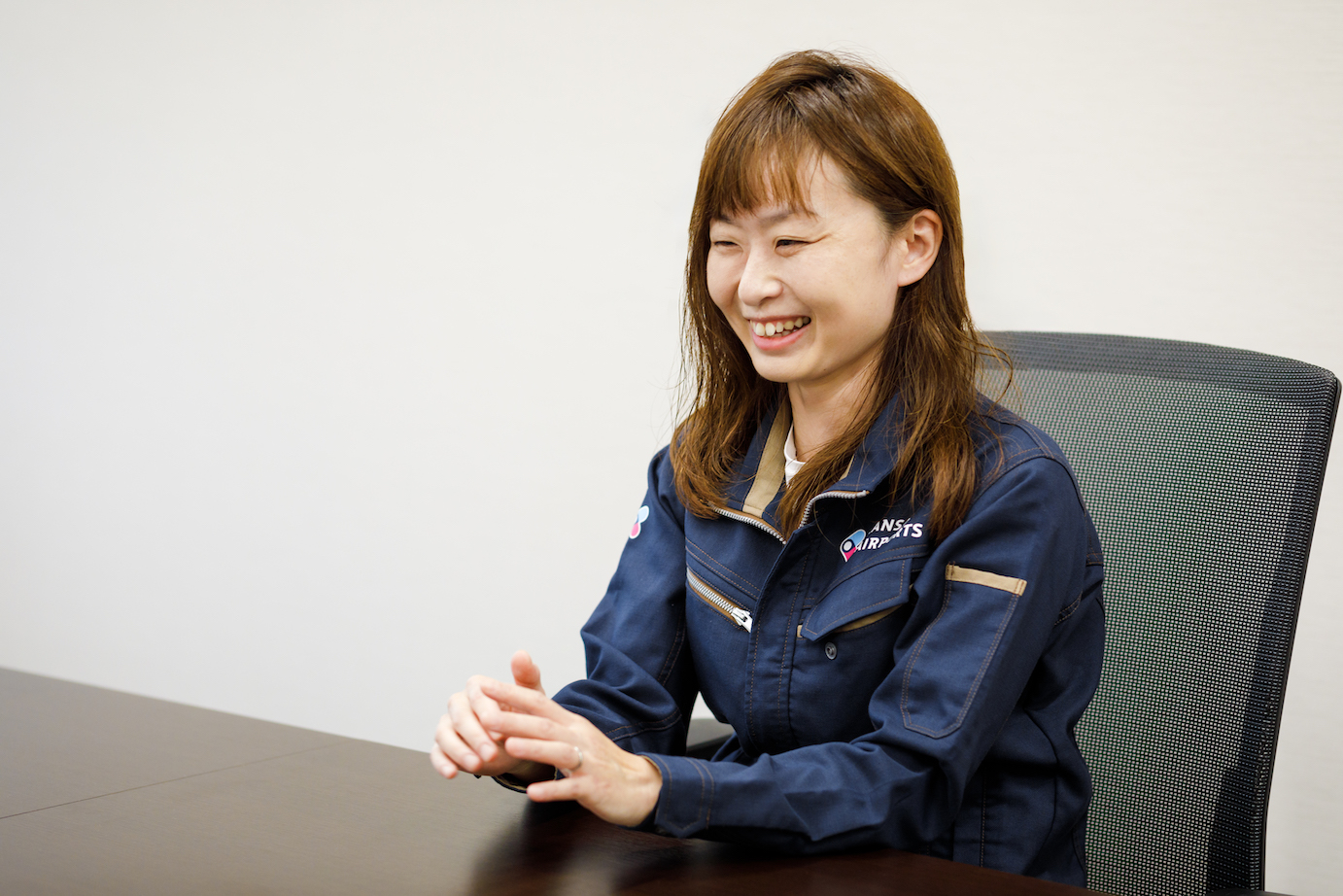
ーーWhat kind of work do you do on a daily basis?
I work to promote environmental initiatives across the Group through the operation of the Kansai Airports Group Environmental Promotion Committee, which consists of managers from departments within the company as well as from Group companies. Last fiscal year, I was involved in planning training programs to raise environmental awareness among all employees, as well as planning and compiling the Environmental Report, which serves as a communication tool both internally and externally. At present, I am also developing a new environmental page for the company website.
ーーWhat is the “Environmental Vision 2050,” which serves as the guideline for the Kansai Airports Group’s environmental initiatives?
The “Environmental Vision 2050” was established by the Kansai Airports Group to contribute to the realization of a sustainable society. For businesses to continue, it is essential that social and economic activities remain sustainable. Therefore, at the Kansai Airports Group, we see it as our corporate responsibility to take proactive action.
ーーWhat specific plans are currently being promoted?
Our initiatives are built around three key pillars: decarbonization, circular economy, and environmental coexistence. For decarbonization, our goal is to achieve net-zero greenhouse gas emissions from all Kansai Airports Group business activities. For circular economy, our target is to reach a 100% resource utilization rate for waste. For environmental coexistence, we aim to ensure a healthy living environment around the airport while also preserving biodiversity.
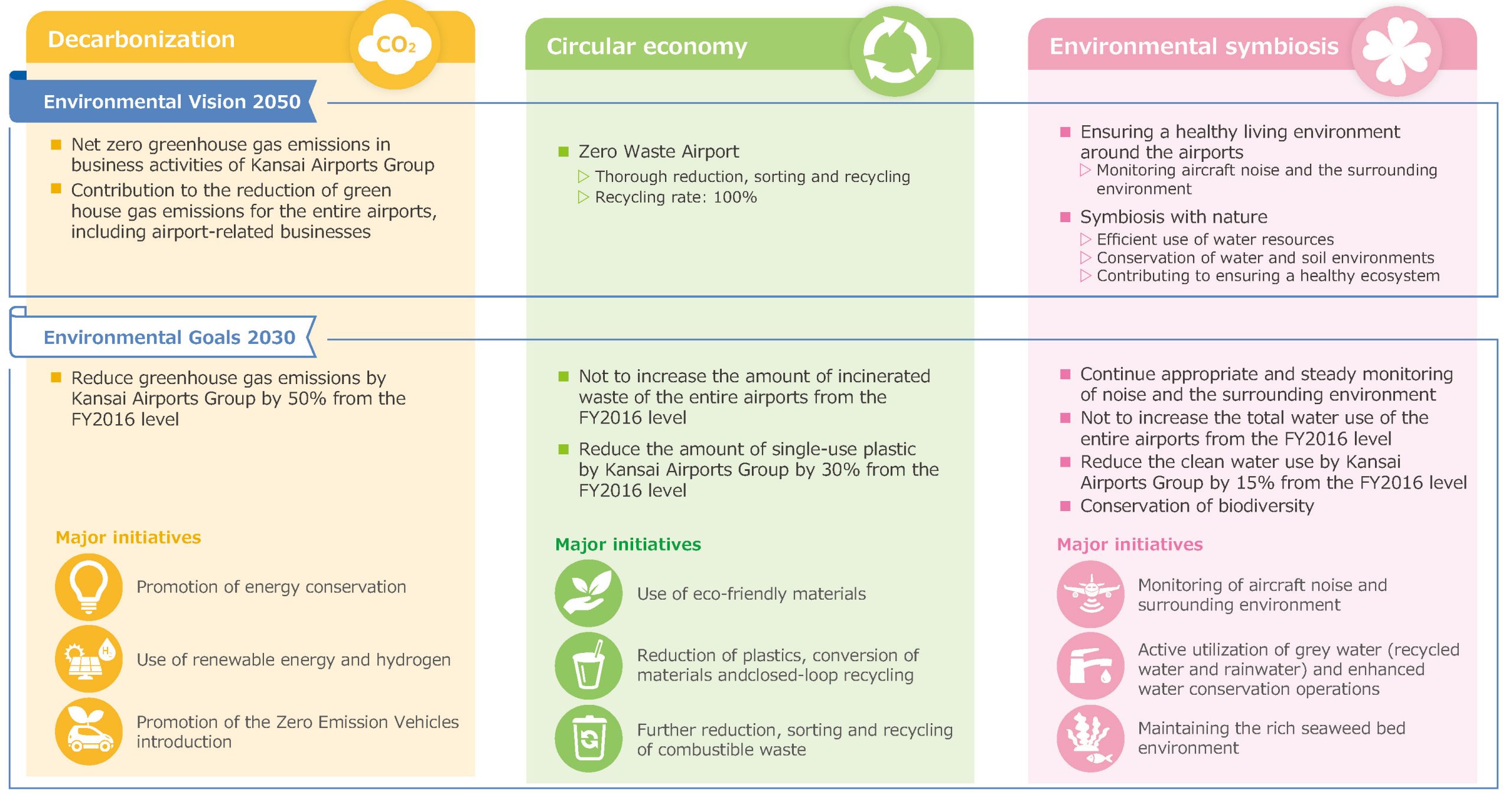
ーーWhy were “decarbonization, circular economy, and environmental coexistence” chosen as the three pillars?
We have established three core themes linking airport operations to the global crises of “climate change,” “loss of biodiversity and pollution,” and “resource depletion.” These are: “Addressing climate change (decarbonization),” “Sustainable resource utilization (circular economy),” and “Coexistence with the surrounding environment and nature (environmental harmony).” Airports are often seen as symbols of economic growth, but in the past, they were sometimes regarded as nuisance facilities. This is precisely why we hope to establish a new role in the region by actively addressing global environmental challenges.
ーーPlease share the vision behind Kansai Airports Group’s “Environmental Vision 2050.”
As a public infrastructure provider deeply rooted in the Kansai region, the Kansai Airports Group is working hand in hand with the local community to confront environmental issues with a forward-looking perspective. We hope that by steadily working toward the realization of the “Environmental Vision 2050,” the local community will recognize the Kansai Airports Group as a company that can turn commitments into reality.
Three initiatives to realize the “Environmental Vision 2050”
ーーPlease talk about the unique initiatives that Kansai Airports Group is undertaking to achieve both the “Environmental Vision 2050” and the “Environmental Goals 2030.”
There are three main initiatives: “Sora×Solar®,” hydrogen energy, and the algae farm project.
The largest of its kind at Japanese airports! Achieving local production and consumption of electricity with “Sora×Solar®”
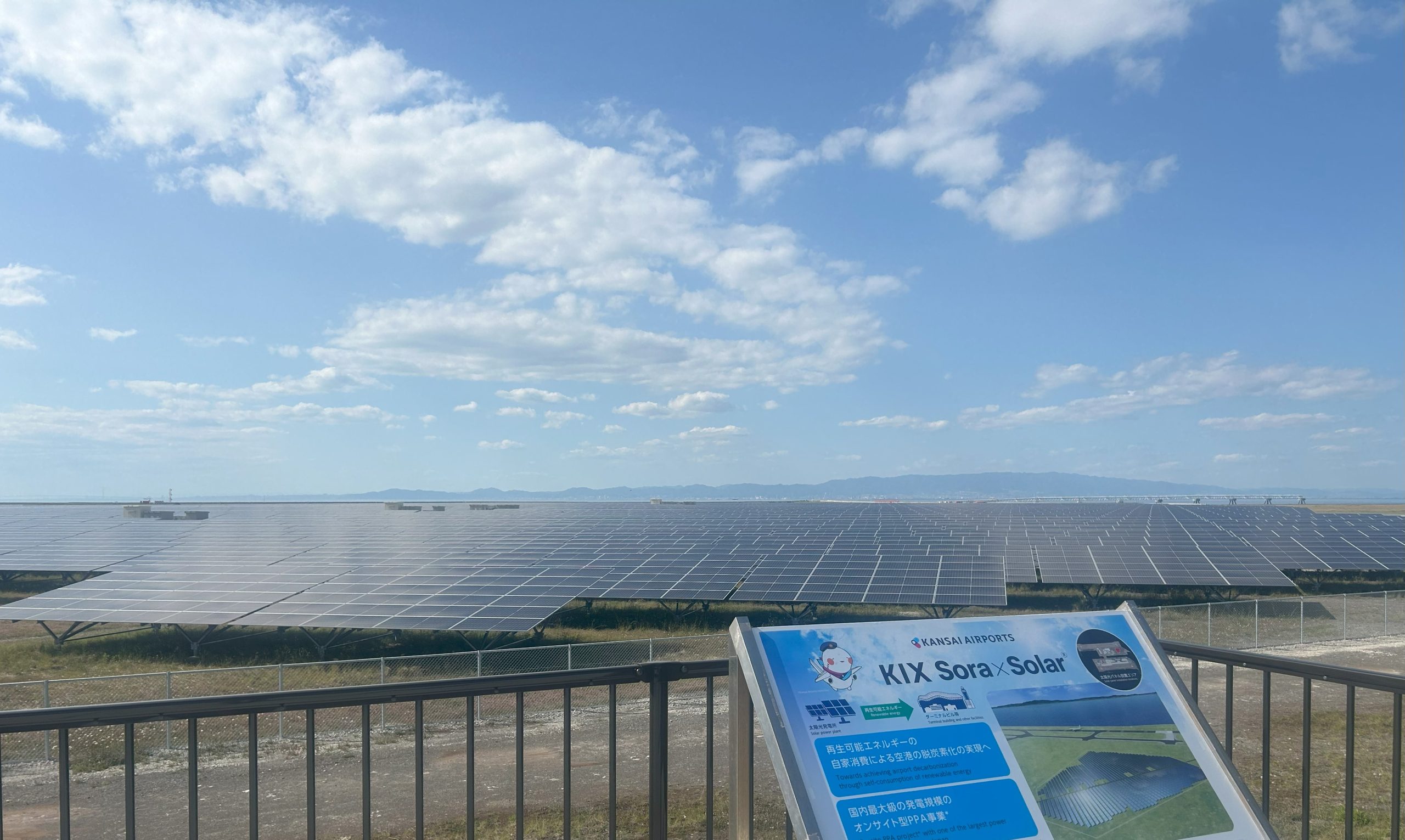
ーーFirst, could you talk about the solar power generation facility “Sora×Solar®”?
Sora×Solar® utilizes the on-site PPA (Power Purchase Agreement) model(*). Approximately 40,000 solar panels have been installed across Kansai International Airport and Osaka Itami Airport, with the generated electricity consumed directly within the airports.
* Under this model, the power producer installs solar power generation equipment on the consumer’s premises at the producer’s expense, retaining ownership and responsibility for maintenance. The electricity generated is then supplied to the consumer.
ーー40,000 panels! That is quite large-scale…
Indeed, it is the largest installation among domestic airports and also ranks among the largest domestic PPA projects in terms of power generation capacity. “Sora×Solar®” is one of the core initiatives driving our greenhouse gas reduction targets, representing Kansai Airports Group’s commitment to the principle of “generating the energy we consume ourselves.”
ーーHow much of a reduction in greenhouse gas emissions is expected from “Sora×Solar®”?
We expect it to reduce Kansai Airports Group’s CO2 emissions by approximately 15%(*). Furthermore, the electricity generated by “Sora×Solar®” is used for terminal building lighting, achieving a true model of “local production for local consumption” of energy.
* Calculated based on the estimated power generation for fiscal 2025 and CO2 emissions for fiscal 2023.
ーーWhat are the future goals and challenges for “Sora×Solar®”?
At present, during daytime hours we are able to make effective use of the generated electricity within the airport. However, challenges arise when there is surplus electricity. It would be wasteful if we were unable to utilize all of the energy we produce. Our next step is to enhance the system so that energy can be used as efficiently as possible.
Utilizing hydrogen: a promising clean energy source for the future!
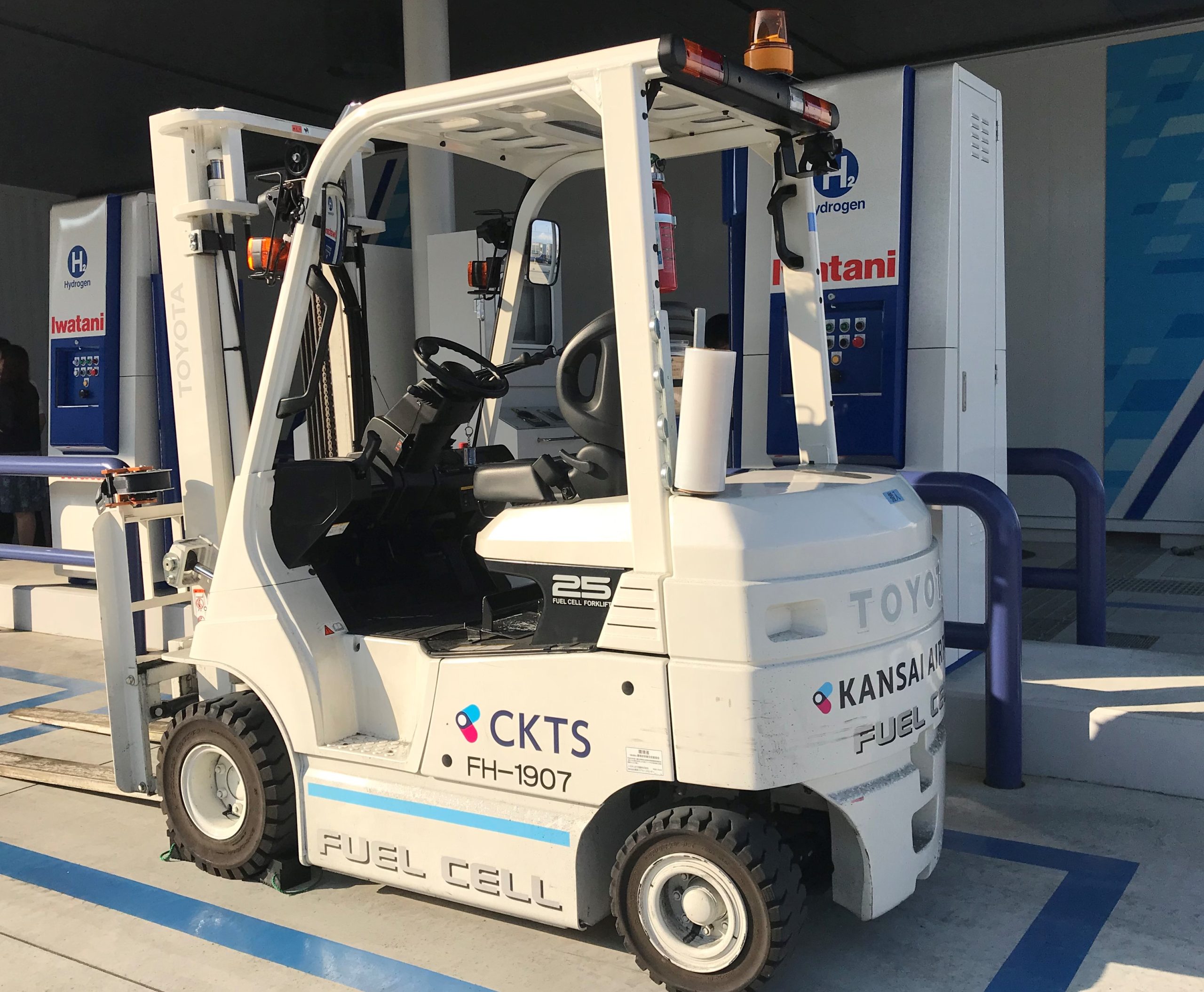
ーーPlease talk about hydrogen energy.
Hydrogen, which emits no exhaust gases when burned, is gaining recognition as a clean energy source for the future. The Kansai Airports Group has introduced Japan’s first commercial hydrogen station at an airport. Kansai International Airport is also equipped with a hydrogen refueling facility for fuel cell industrial vehicles, establishing infrastructure that supports the future expansion of fuel cell mobility.
ーーHow is hydrogen energy currently being utilized?
At Kansai International Airport, hydrogen powers both fuel cell forklifts and fuel cell buses. Compared to electric vehicles, fuel cell vehicles offer the advantage of very short refueling times and can be operated with greater flexibility. Feedback from the field has been highly positive, noting their quiet operation and the absence of exhaust emissions.
ーーHydrogen will become an increasingly indispensable energy source for airports striving to coexist with the environment.
That is correct. Hydrogen energy is also anticipated to become a future fuel for aircraft, and we intend to continue contributing to the realization of this possibility. In addition, we aim to pursue initiatives that integrate electricity generated by “Sora×Solar®” with hydrogen. Although this will take time, by combining the unique characteristics of different energy sources with the functions of airports, we seek to maximize greenhouse gas reductions and advance the goals of the “Environmental Vision 2050.”
The “Algae Bed Project:” protecting the rich ecosystem of Osaka Bay
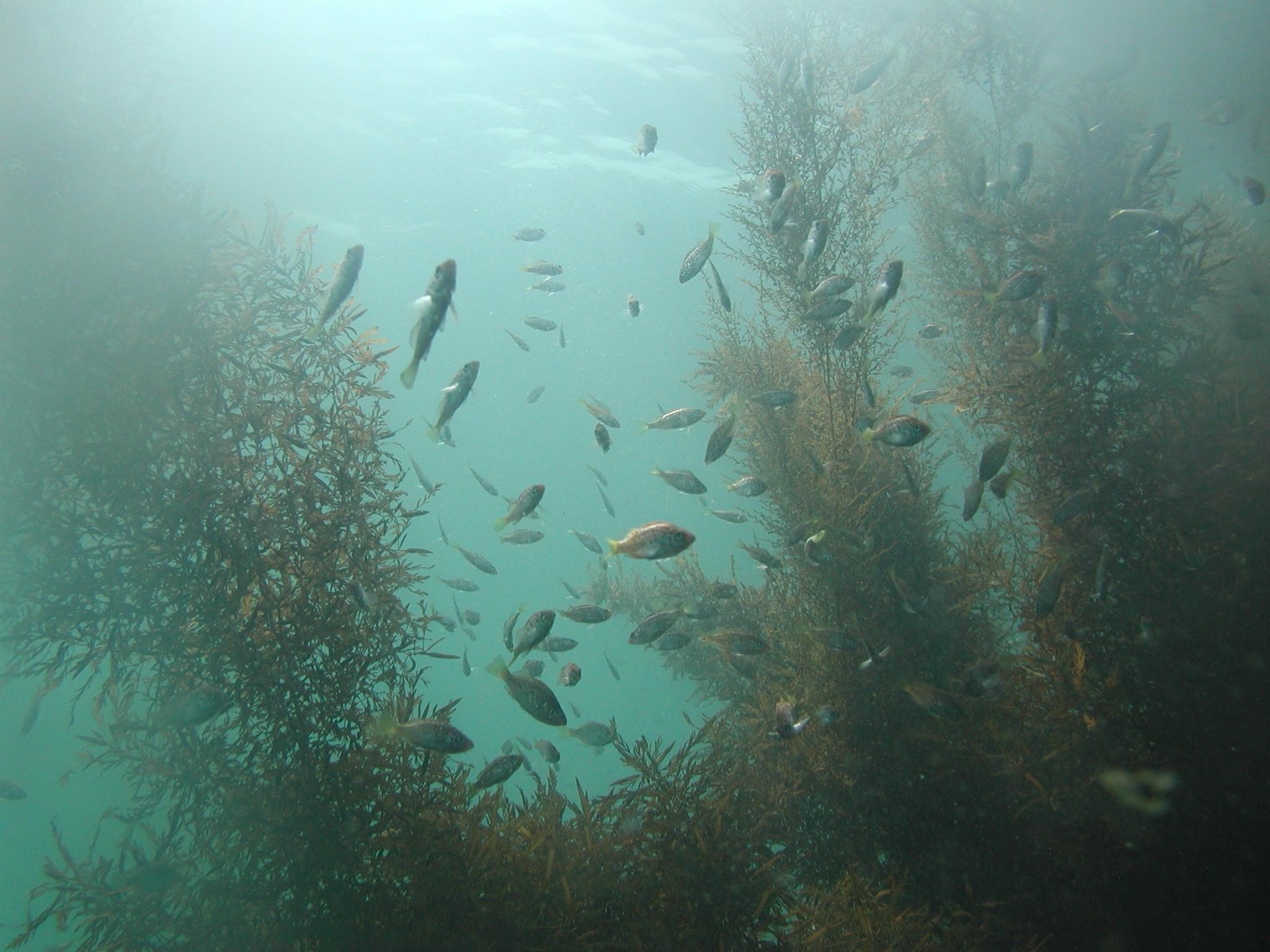
ーーThird, could you talk about the “Algae Bed Project”?
As the world’s first full-scale offshore airport, Kansai International Airport has pursued harmony with the marine environment since its planning stage by actively fostering algae bed habitats that serve as breeding grounds for marine life. Most of the seawalls were constructed with gently sloped stone revetments, allowing light to penetrate over a wide area. This creates favorable conditions for the growth of seaweed, which also absorbs CO2.
ーーIn addition to creating an environment for seaweed growth, what other initiatives are being undertaken?
We conduct continuous monitoring of the seaweed beds and implement conservation measures based on the results. Through years of sustained effort, a rich seaweed bed ecosystem has been preserved, supporting marine biodiversity. We also host educational tours for elementary school students, introducing them to seaweed beds and the airport’s environmental initiatives, with the hope of fostering greater interest in environmental issues among the next generation.
ーーThat is indeed an important initiative for helping children feel connected to environmental issues. What are your future plans?
We aim to expand the seaweed bed initiatives that have been in place since the construction of Kansai International Airport, extending them beyond the airport area to enrich the entire ecosystem of Osaka Bay. To achieve this, we are actively pursuing collaboration with the local community. Although still at an early stage, we hope these efforts will eventually contribute to supporting the local fishing industry and preserving the region’s rich food culture.
Changing awareness of the environment: for the future we will pass on to our children
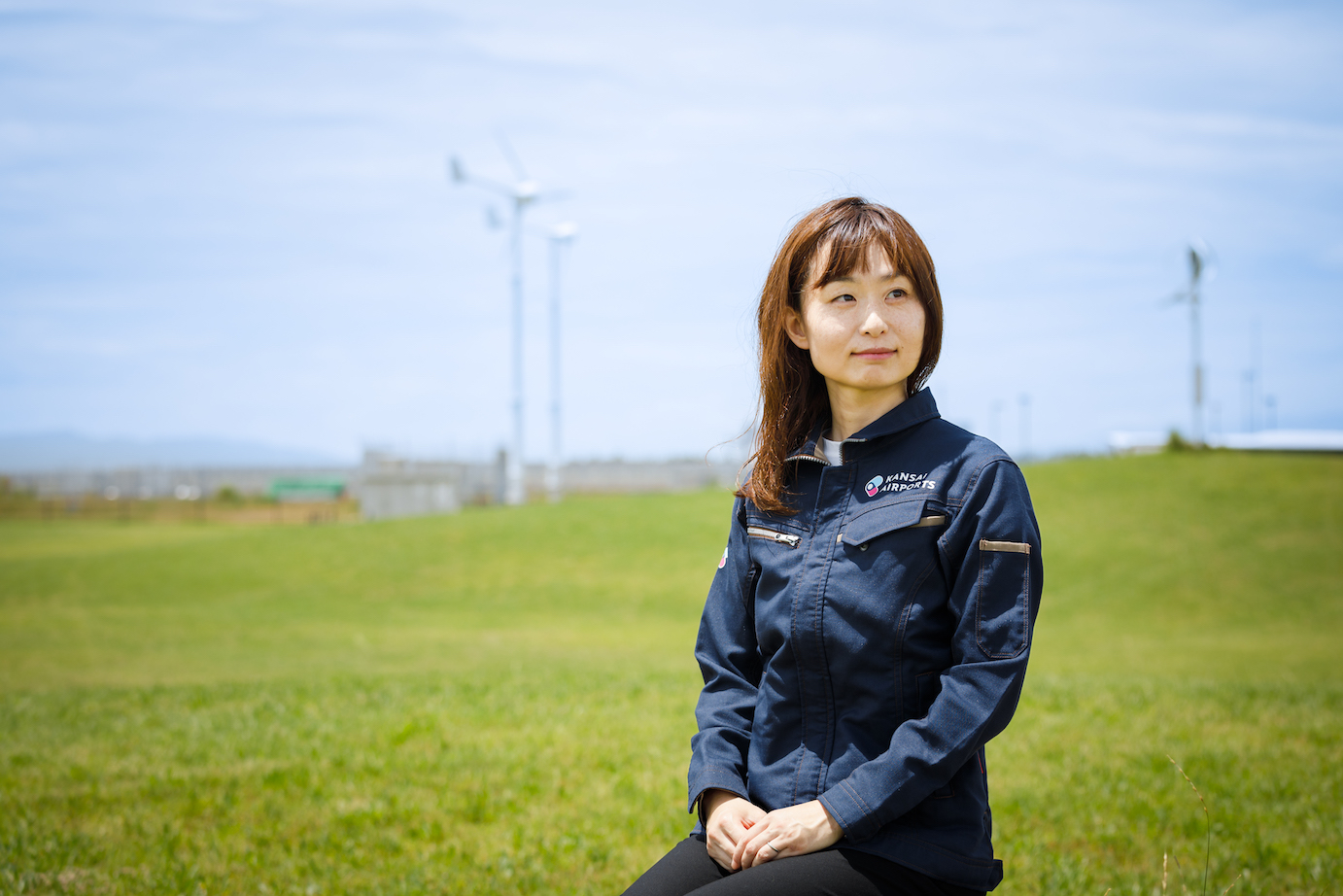
ーーWhat are your expectations for the realization of the “Environmental Vision 2050” and “Environmental Goals 2030”?
I hope that through demonstration projects leveraging the airport’s unique characteristics (as a “city” in and of itself), such as hydrogen energy utilization and advanced waste management, we can create more examples of how airports contribute to the adoption of new technologies across society.
ーーHas your involvement with environmental issues changed you personally?
Becoming a mother has significantly shifted my perspective. When I see the realities of climate change, such as drastic declines in Pacific saury catches or reduced rice harvests driving up prices, I find myself asking, “What will Japan be like when these children grow up?” Imagining the future my children will face has made me view environmental issues as deeply personal.
ーーHaving worked at Kansai Airports Group for many years, have you noticed any shifts in the company’s approach to environmental issues?
More than ten years ago, when we were focused on noise mitigation, environmental efforts were seen primarily as the responsibility of the environmental team. I sense a change in awareness, with the entire Group embracing these challenges together rather than leaving them to one department. I believe this represents steady progress in a positive direction.
ーーFinally, could you share your goals for continuing to tackle environmental issues?
My immediate goal is to achieve the “Environmental Goals 2030.” To accomplish this, I want to encourage Kansai Airports Group employees to view environmental perspectives as an integral part of their daily work—something that can serve both as a challenge and as an opportunity for personal growth and fulfillment.
ーーBeyond achieving these goals, what kind of future do you envision?
Since taking on my current role, I have had more opportunities to engage with people from various companies. I am encouraged by how many express a strong awareness of environmental issues and a genuine desire to take action. The Kansai Airports Group alone can only take on a portion of the environmental issues we all face. By working together with other companies and taking on new challenges in collaboration, I believe we can move closer to realizing our “Environmental Vision 2050.” It would be truly great if the work we are undertaking today not only ensures a safe future for our children, but also brings a sense of purpose and fulfillment to many more people involved in these efforts.

Behind our efforts to aim for greater heights and shape the future are great efforts and wishes of a lot of people supporting the airports.
In “Fly High,” we show you the passion and future vision of people involved with the airports with diverse stories of people working at the airports, those who grew up with the airports, those who love airplanes.


